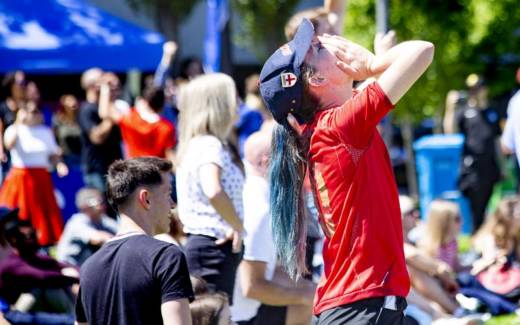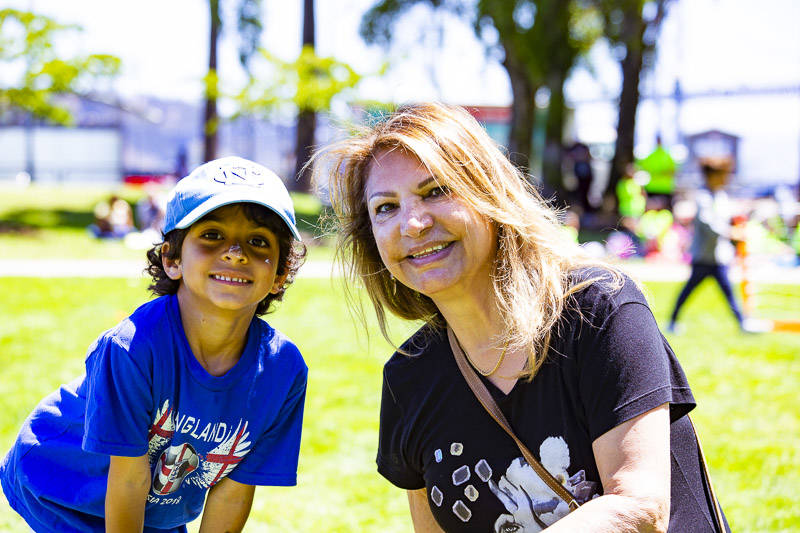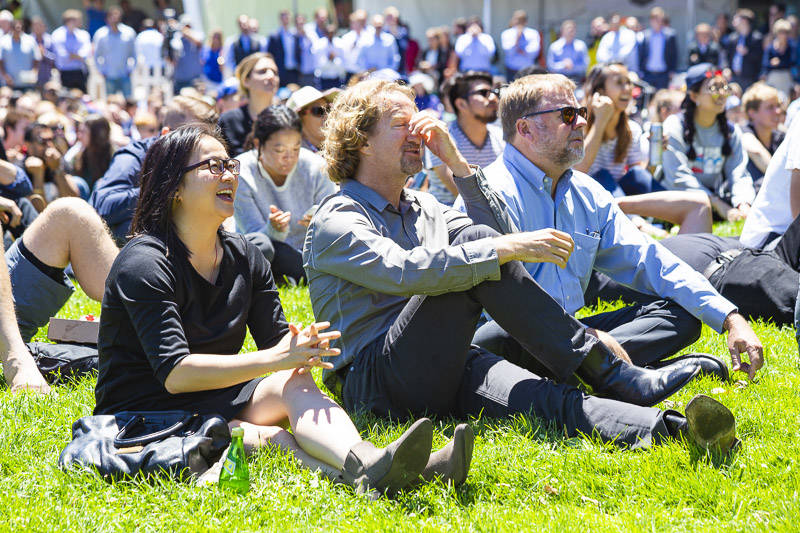Even if you don’t watch soccer, you’ve probably heard it referred to at some point as “the beautiful game.” While the exact origin of the phrase is in some dispute (like “beatnik,” there are a few claimants), it’s become one of the default phrases employed to describe the sport as a whole. And while beauty is very much in the eye of the beholder, one need only watch a replay of the first goal scored in the England-Croatia World Cup semifinal match by English defender Kieran Trippier—a swooping arc flying first over the heads of Croatia’s defensive “wall,” then soaring above goalkeeper Danijel Subašić to smash into the back of the net—to get a sense of the game’s potential for beautiful moments.
In fact, there’s so much potential for beauty in soccer, especially at the World Cup level, that it can move an arts journalist such as myself to spend the better part of a month lurking in dark bars at 7am. As the games have progressed from knockout rounds, to the final sixteen, the final eight, the quarterfinals, and the best of the best (or sometimes just the luckiest) inching their way to this weekend’s finals, I find I can hardly resist the very theatre-like qualities of the World Cup and, particularly in large outdoor public screenings, its fans.
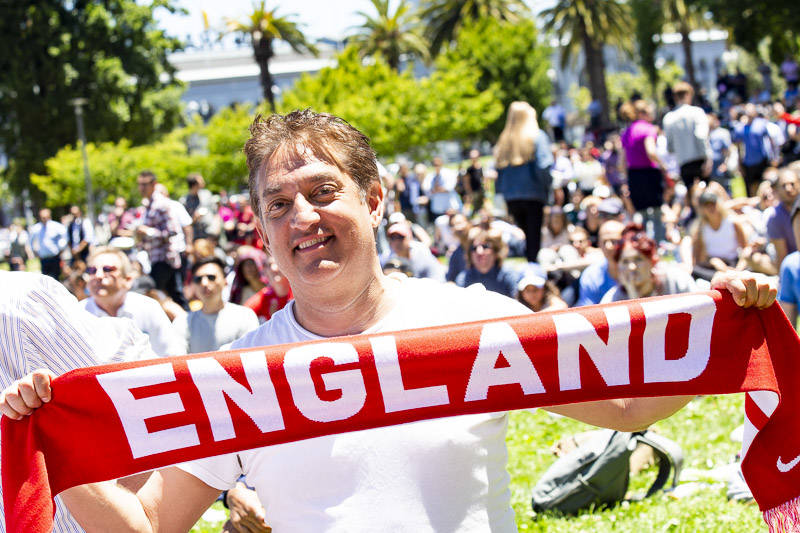
Soccer has so much happening that it could be said to encompass a wide variety of art forms within its sweaty bosom. The almost balletic precision of Spain’s “tiki-taka” passing game as contrasted with the spontaneous improv of a lucky header such as that of Belgium’s Jan Vertonghen against Japan, a literal long shot turned unexpected goal. The physical beauty of athletic bodies in motion, without giant helmets or baggy trousers to mar the view. The high drama of high stakes leading to shoving matches and shouted epithets on the pitch (to say nothing of the stands), some inspired by fresh insults, some by deep-seated rivalries stretching back generations. The low humor of a ball planted squarely in England defender Kyle Walker’s bollocks and the unabashed emotion on the faces of the Croatian team after cementing their winning goal in the 109th minute of play, particularly as captured by Salvadoran photojournalist Yuri Cortez, who was buried in the middle of their celebratory dogpile.
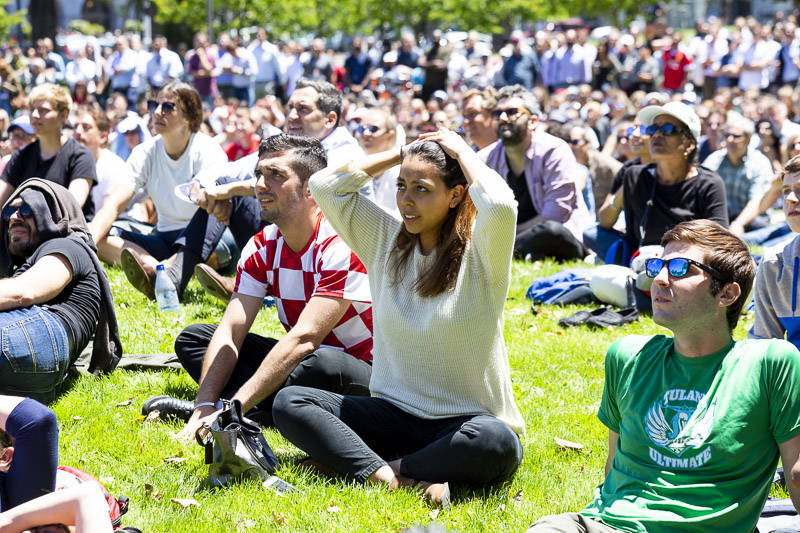
At Sue Bierman Park, a grassy knoll sandwiched between Drumm and the Embarcadero, a crowd gathered Wednesday to watch an outdoor screening of the World Cup semi-final match between England and Croatia, a courtesy provided by San Francisco Parks and Recreation (the final will be screened at the Civic Center on Sunday, July 15). Unlike many of the bars that show World Cup games in San Francisco, these outdoor screenings have a way of drawing supporters of both teams, and yet none (that I’ve been to) have had any serious altercations. We are civil “football” fans in SF, it seems, but that doesn’t stop the pageantry, people wrapped in flags, facepaint, team colors, or the palpable tension and anticipation that rises with each unpredictable twist in plot. Folks from all walks of life come to represent and be represented. For them, as well as for the players looming on the giant screen above us, a World Cup soccer game can be emotionally challenging, physically demanding, and potentially transcendent.
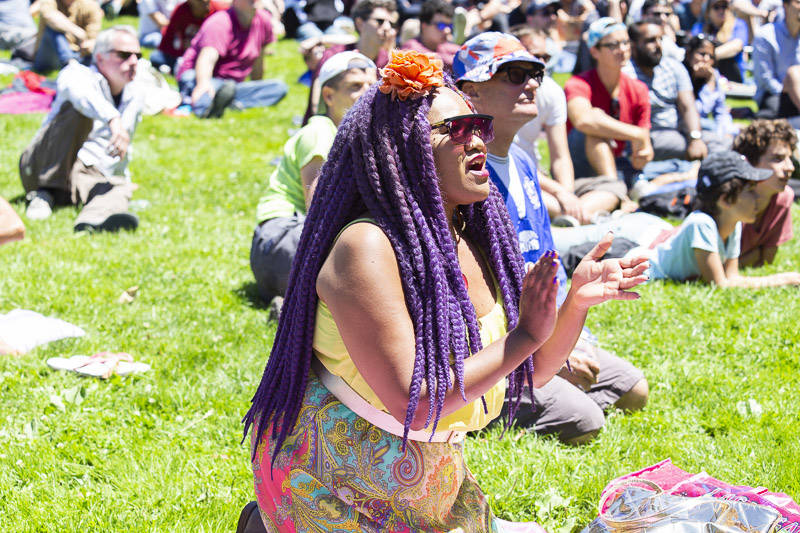
Although at first glance, and second count, supporters of England appeared to outnumber those of Croatia at the screening, as the game progressed and Croatia’s chances improved, those few appeared to swell in number, or at least in appreciative vocalization. And while it might be inappropriate to make such sounds at a particularly stirring Symphony performance, it would certainly not be out of place after a beautifully improvised jazz solo or a fan favorite rock anthem played third on the set list at the Independent. The groans and “come ooooooon”’s of fan frustration might just as easily (though not as publicly) come out of a stage-builder’s mouth at a wayward flat or a misplaced drill bit.
